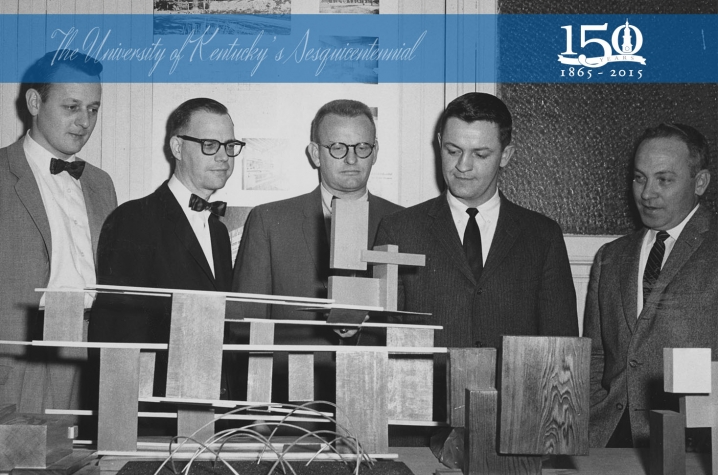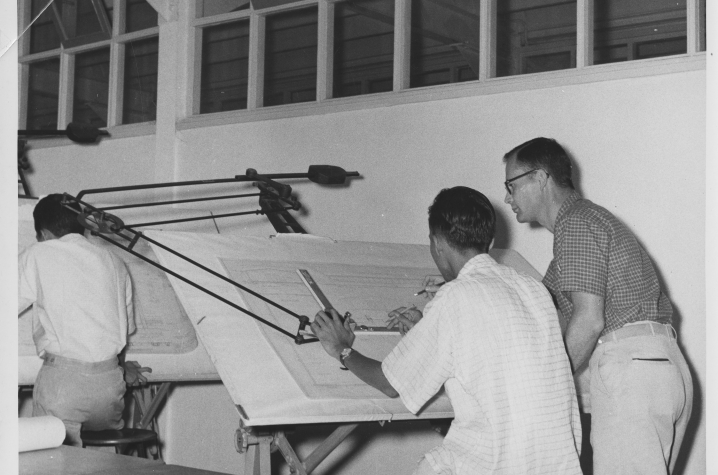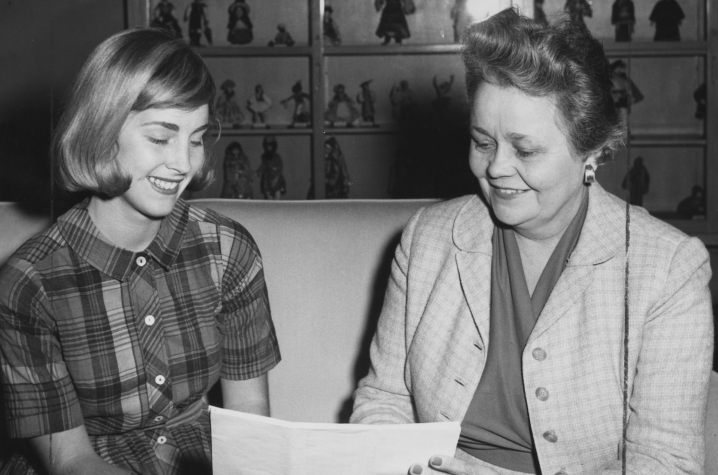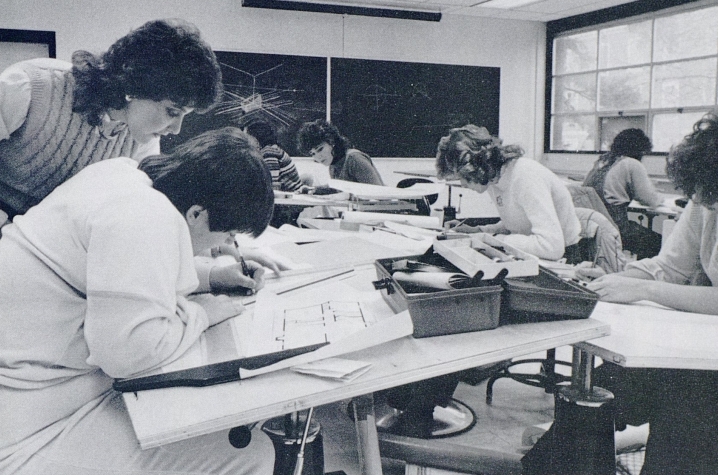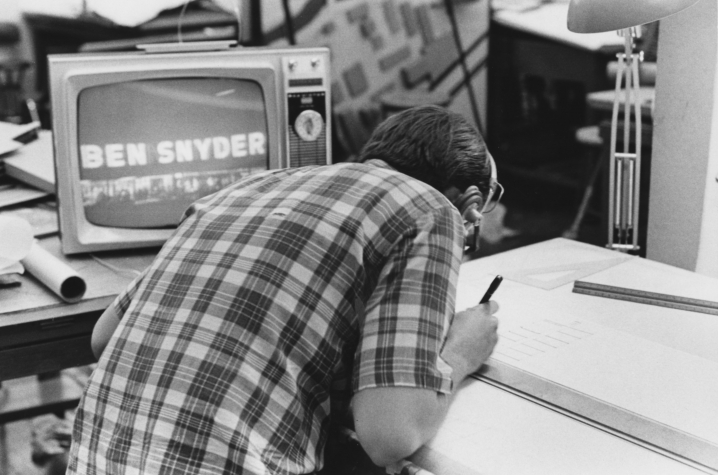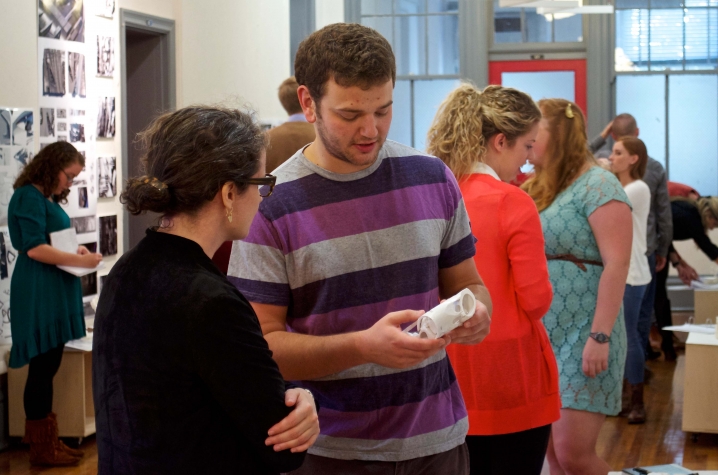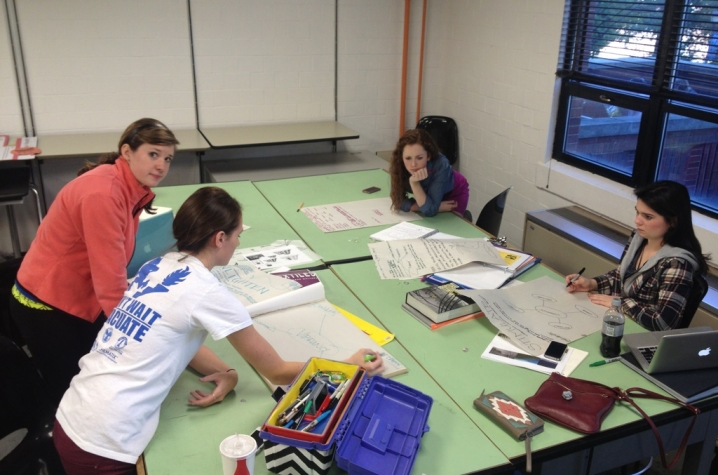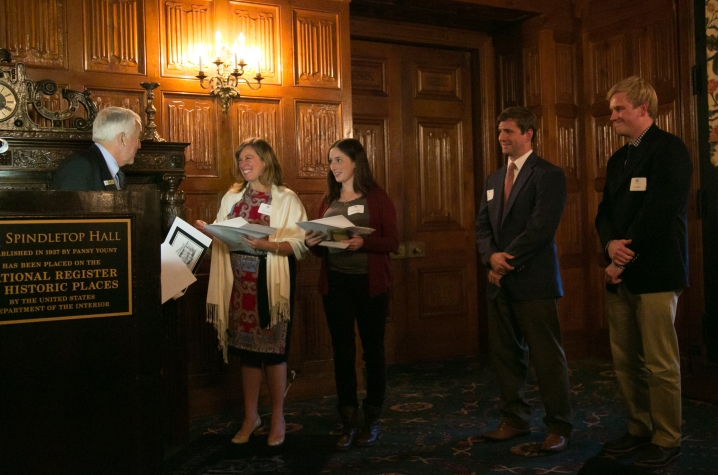UK College of Design: Building on a Foundation of Excellence in Innovation, Service
LEXINGTON, Ky. (Aug. 27, 2015) — While the University of Kentucky College of Design was established in 2002, it has a storied history of almost 100 years of study on campus with its foundation in an architectural option created in the College of Engineering in the 1920s, and later, the residential design program, the start of interior design study, in the College of Home Economics (now the School of of Human Environmental Sciences). This scattered start for related disciplines wasn't uncommon in the early years at land grant institutions but like the world of design today the areas of study have became much more synthesized in modernity.
Building on the college's architectural and residential design roots, students now pursue undergraduate and graduate studies in architecture, interiors and historic preservation, while learning to develop solutions for real world problems outside their walls. Starting next month, distinguished educator and inventor Mitzi Vernon will take over the reins as dean of the college and advocate of its future endeavors as it approaches its 50th year on campus.
More than 30 years after the university's first architecture courses, the subject evolved into a complete area of studies when Professor Charles P. Graves joined the university's civil engineering faculty in 1958. Graves was charged with converting the option to a professional degree program. The curriculum changed from a mathematical and applied science concentration to courses in the arts, science, humanities, architectural design and history.
By 1960, the program had grown substantially. In response, the UK Board of Trustees established the Department of Architecture in the College of Engineering, with the understanding that the department would be granted autonomy upon accreditation. The first class to complete the new professional degree program graduated in 1964.
Soon after the university's first class of architecture students graduated, the School of Architecture was established in 1965 with Graves as dean. That year, the program received its first accreditation from the National Architectural Accrediting Board (NAAB). With accreditation attained, the school became a college in 1967.
As the College of Architecture's enrollment increased, it moved to temporary off-campus quarters in the Reynolds Building, an old tobacco warehouse on the edge of UK's campus. In 1965, the program moved to central campus taking up residence in the physics building, Pence Hall.
By 1971, the college had grown to more than 400 students. To accommodate this growth, space in Miller Hall was given to the college and a selective admission policy was adopted. The same year, Graves resigned as dean to devote his time to teaching and private practice.
Across campus, Richard Rankin, the most noted interior design educator in the U.S., was hired by Dean of Home Economics Marjorie Stewart to establish a professional degree program in interior design in the early 1970s. This was in response to a national movement for the professionalization of interior design with the growth in the career field in the design of large public commercial and institutional environments. UK's professional program was put in place in 1975 with the first graduating class earning degrees in 1979. The program was then able to go for accreditation, which was awarded in the spring of 1981, by the Foundation of Interior Design Education and Research (now the Council of Interior Design Accreditation or CIDA).
In the College of Architecture, Professor Anthony Eardley became the college's second dean in 1972. Prior to coming to UK, Eardley served as a professor at the Architectural Association, London, England; Princeton University; and The Cooper Union. In 1986, Professor José R. Oubrerie became the third dean. Dean Oubrerie previously worked as an associate of celebrated architect, designer and urban planner Le Corbusier and as a professor at Columbia University.
David B. Mohney, a former student of the popular architect Michael Graves, became the fourth dean in 1994. He had served as associate director of education at the Institute for Architecture and Urban Studies, as a visiting critic at Harvard University, and as a partner of the firm of Chan and Mohney Architecture. Under Mohney’s leadership, a program in historic preservation was established in the College of Architecture, and the Master of Historic Preservation degree was first offered in 1996.
As a result of restructuring within the university, the college took a new name, College of Design, in January 2002. This new college expanded to include not only the School of Architecture, but the School of Interior Design (now the School of Interiors) and the Historic Preservation Program (now a department). With the addition of the new programs and students came the addition of two other learning spaces, Funkhouser Building and Bowman Hall. Today, the college still occupies space in Pence, Miller, Funkhouser and Bowman, with Pence housing the college's administration offices, the Hunter M. Adams Design Library and more recently the Digital Media Lab and Fabrication Lab.
The continued growth of the college and the restructuring strengthened the young programs giving the college a great base while leaving it open to still try new things.
"Though it is a relatively new college, the College of Design has a long and interesting history through its composite units" Vernon said. "This narrative positions it well for future expansion, and I am interested in using lessons from its past for existing program growth and new program initiation. Because of its youth, the college is still malleable. This circumstance coupled with the focused plans of Provost Tracy and President Capilouto creates a perfect opportunity for expansive thinking."
In 2008, Michael Speaks became the first appointed dean for the College of Design. Speaks is a former director of the graduate program and founding director of the Metropolitan Research and Design Postgraduate Program at the Southern California Institute of Architecture in Los Angeles. Speaks also headed Big Soft Orange, a Dutch-American urban research group based in Rotterdam and Los Angeles. A founding editor of the cultural journal Polygraph and a former editor at Architecture New York and a+u (Tokyo), he also served as a contributing editor for Architectural Record.
Under Speaks' leadership the college adopted a concentrated approach to real world problems with the Design + Energy Initiatives. This innovative programming was timely, as the development of renewable, cleaner and more efficiently produced and consumed forms of energy continue to be at the forefront of challenges our world faces today.
While problems surrounding design and energy efficiency are global, solutions and their implications are more often discovered and experienced locally. The new program at UK College of Design recognized that innovative solutions arise when knowledge is creatively applied to known problems surrounding energy initiatives. From Paducah to Harlan, the college's students and faculty took on projects helping envision potential solutions to local problems.
The focus on regional issues continued to earn the college recognition beyond the state's borders, both nationally and internationally, including an invitation to fifth International Architecture Biennale Rotterdam for the "Kentucky River Cities" project which developed ideas for the communities of Louisville, Paducah and Henderson.
Today, the College of Design continues to earn acclaim for working on real world problems in the Commonwealth. Most recently, students and faculty have garnered interest for creating proposals for rebuilding West Liberty, Kentucky, which was struck by a devastating tornado in 2012; a POE (post occupancy evaluation) research project done in collaboration with UK HealthCare and GBBN Architects to better understand the impact of design on the delivery of health care has been published; and an eLII (e-learning innovation initiative grant) was secured to provide greater accessibility throughout the Commonwealth and nation for individuals to remotely obtain expertise in conservation of landscapes and preservation of built environments that contributes to the economic sustainability.
This service focus is what helped attract Dean Vernon to the college. "Historically, the college has had a strong tradition of using engagement and service learning for studio projects. This is part of the history that interests me. As I’ve said recently, I believe it is to everyone’s benefit to 'be where you are' — take advantage of your context. What does the University of Kentucky and the Commonwealth specifically offer, and what does it need?"
The UK School of Architecture has a national reputation for excellence. The architecture studio is the foundation of the program, providing a social and curricular framework for the architecture student. Representational skills such as drawing, model making, and computer modeling are practiced rigorously as essential skills for design. In addition, students study building technology; materials and structural systems; digital fabrication techniques; the history, theory, and criticism of architecture; and the ethical and professional principles of a successful architecture practice.
The UK School of Interiors: Planning/Strategy/Design is the premier interior design program in the state of Kentucky. The professional degree program is fully accredited by CIDA. The school offers both the four-year undergraduate professional degree and the post-professional graduate degree. Through studio, classroom and real-world assignments, interior design students learn to solve complex organizational problems associated with work, place, experience and performance. These professional skills prepare students to manage the aesthetic, technical and business aspects of interior design projects. Among interiors alumni are some of the most noted and respected design leaders in the country.
The mission of the Department of Historic Preservation is to prepare graduates who can thoughtfully apply knowledge of historic resources to planning and design processes that emphasize building revitalization, rural preservation and community engagement. The two-year, 48 credit hour graduate curriculum focuses on analytical, theoretical and procedural aspects of preservation, and their application to preservation and planning. The program has been certified since its inception by the National Council of Preservation Education (NCPE). Multidisciplinary in nature, the program draws not only on faculty from historic preservation but also from architecture, interior design, landscape architecture, engineering and geography.
As part of their curriculum, UK College of Design students learn contemporary processes such as prototyping to solve problems and innovate new solutions. Prototypes, three-dimensional physical models, are created with digital design and fabrication tools and technologies such as CNC milling, 3-D printing and laser-cutting and allows students to propose solutions; examine results; redefine problems; and propose new solutions.
Looking forward, Dean Vernon is excited to expand on UK College of Design's academic foundation and develop new partnerships across campus. "These existing projects are already the future. And there is more to come. I see emerging new programs in product/industrial design and expanded missions for historic preservation, architecture and interiors, in addition to deeper collaborations across campus. I see the college in a physically, new, 'open studio' space that both corrects its current facilities issues and positions it for additional growth in student body. More importantly open space positions the college as a visible model for expansive collaborative projects with engineering, agriculture, business and health care."
MEDIA CONTACT: Whitney Hale, 859-257-8716; whitney.hale@uky.edu





